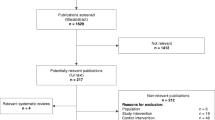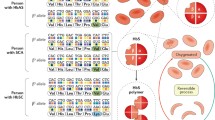Abstract
The purpose of this paper was to review the research examining the epidemiology of and costs associated with sickle cell anaemia (SCA). Although there is general acceptance that Black populations are at greatest risk of the disease, estimates of disease incidence and prevalence vary greatly among different Black populations. In addition, the sickle cell haemoglobinopathy poses a health problem to many other ethnic groups, including populations native to Italy, Greece, Turkey, Saudi Arabia, India, Pakistan, Bangladesh, China, and Cyprus. As penicillin prophylaxis has been shown to reduce the risk of sepsis among children with SCA, many governments have established newborn screening programmes to improve the health outcomes for patients with this disease. As a group, patients with SCA incur large numbers of hospital admissions, emergency department visits, and outpatient visits, often at substantial costs, hence, obtaining adequate health insurance is a problem for many patients. A common theme present in studies reviewed in this article is that a small proportion of patients tends to account for a majority of the total healthcare costs.
As new diagnostic methods and treatment options become available, balancing costs associated with SCA and quality of healthcare will continue to present challenges to many healthcare providers and insurers.

Similar content being viewed by others
References
Serjeant GR. Sickle cell disease. 2nd ed. New York (NY): Oxford Press, 1992
Hickman M, Modell B, Greengross P, et al. Mapping the prevalence of sickle cell and beta thalassaemia in England: estimating and validating ethnic-specific rates. Br J Haematol 1999; 104: 860–7
Agency for Health Care Policy and Research. Sickle cell disease: guideline overview. Rockville (MD): US Department of Health and Human Services., AHCPR Pub. No. 93-0560, 1993
Scott RB. Sickle-cell anemia: high prevalence and low priority. N Engl J Med 1970; 282: 164–5
Gima AS, Lee JC. Prevalence of sickle cell anemia: an improved outlook. J Natl Med Assoc 1975; 67: 259–63
Boyle EJ, Thompson C, Tyroler HA. Prevalence of the sickle cell trait in adults of Charleston County, SC: an epidemiological study. Arch Environ Health 1968; 17: 891–8
Serjeant GR. Screening for sickle-cell disease in Brazil. Lancet 2000; 356: 168–9
Serjeant GR, Serjeant BE, Forbes M, et al. Haemoglobin gene frequencies in the Jamaican population: a study in 100 000 newborns. Br J Haematol 1986; 64: 253–62
Ohene-Frempong K, Nkrumah FK. Sickle cell disease in Africa. In: Embury SH, Hebbel RP, Mohandas N, et al., editors. Sickle cell disease: basic principles and clinical practice. New York (NY): Raven Press, 1994: 423–35
Olney RS. Newborn screening for sickle cell disease: public health impact and evaluation. In: Khoury MJ, Burke W, Thomson E, editors. Genetics and public health in the 21st century. New York (NY): Oxford University Press, 2000: 431–46
Gaston MH, Verter JI, Woods G, et al. Prophylaxis with oral penicillin in children with sickle cell anemia: a randomized trial. N Engl J Med 1986; 314: 1593–9
Tsevat J, Wong JB, Pauker SG, et al. Neonatal screening for sickle cell disease: a cost-effectiveness analysis. J Pediatr 1991; 118: 546–54
Lane PA, Eckman JR. Cost-effectiveness of neonatal screening for sickle cell disease. J Pediatr 1992; 120: 162–3
Panepinto JA, Magid D, Rewers MJ, et al. Universal versus targeted screening of infants for sickle cell disease: a cost-effectiveness analysis. J Pediatr 2000; 136: 201–8
Zeuner D, Ades AE, Karnon J, et al. Antenatal and neonatal haemoglobinopathy screening in the UK: review and economic analysis. Health Technol Assess 1999; 3: 1–186
Shafer FE, Lorey F, Cunningham GC, et al. Newborn screening for sickle cell disease: 4 years of experience from California’s newborn screening program. J Pediatr Hematol Oncol 1996; 18: 36–41
Sprinkle RH, Hynes DM, Konrad TR. Is universal neonatal hemoglobinopathy screening cost-effective? Arch Pediatr Adolesc Med 1994; 148: 461–9
Modell B. Guidelines for the control of haemoglobin disorders: WHO working group on haemoglobinopathies. Geneva: World Health Organization, 1994
Wierenga KJJ, Hambleton IR, Lewis NA. Survival estimates for patients with homozygous sickle-cell disease in Jamaica: a clinic-based population study. Lancet 2001; 357: 680–3
el-Hazmi MA, Warsy AS. Alpha thalassaemia in Yemeni children with sickle cell disease. J Trop Pediatr 1999; 45: 370–4
Vichinsky E, Hurst D, Earles A, et al. Newborn screening for sickle cell disease: effect on mortality. Pediatrics 1988; 81: 749–55
Lee A, Thomas P, Cupidore L, et al. Improved survival in homozygous sickle cell disease: lessons from a cohort study. BMJ 1995; 311: 1600–2
Anonymous. Mortality among children with sickle cell disease identified by newborn screening during 1990–1994: California, Illinois, and New York. Morb Mortal Wkly Rep CDC Surveill Summ 1998; 47: 169–72
Diggs LM. Anatomic lesions in sickle cell disease. In: Abramson H, Bertles JF, Wethers DL, editors. Sickle cell disease: diagnosis, management, education, and research. St Louis (MO): CV Mosby, 1973: 189–229
Platt OS, Brambilla DJ, Rosse WF, et al. Mortality in sickle cell disease: life expectancy and risk factors for early death. N Engl J Med 1994; 330: 1639–44
Powars D, Overturf G, Weiss J, et al. Pneumococcal septicemia in children with sickle cell anemia: changing trend of survival. JAMA 1981; 245: 1839–42
Woods K, Karrison T, Koshy M, et al. Hospital utilization patterns and costs for adult sickle cell patients in Illinois. Public Health Rep 1997; 112: 44–51
Ballas SK. Bone-marrow transplantation in sickle-cell anaemia: why so few so late [letter]? Lancet 1992; 340: 1226
Yang YM, Shah AK, Watson M, et al. Comparison of costs to the health sector of comprehensive and episodic health care for sickle cell disease patients. Public Health Rep 1995; 110: 80–6
Bilenker JH, Weller WE, Shaffer TJ, et al. The costs of children with sickle cell anemia: preparing for managed care. J Pediatr Hematol Oncol 1998; 20: 528–33
Nietert PJ, Abboud MR, Zoller JS, et al. Costs, charges, and reimbursements for persons with sickle cell disease. J Pediatr Hematol Oncol 1999; 21: 389–96
Davis H, Moore RMJ, Gergen PJ. Cost of hospitalizations associated with sickle cell disease in the United States. Public Health Rep 1997; 112: 40–3
International Classification of Diseases. 9th rev., clinical modification. Dover (DE): American Medical Association, 1996
Gullattee AC. Medico-legal insurance implications of sickle cell anemia. J Natl Med Assoc 1973; 65: 415–9
Gilbert SK. The health insurance plight of patients with sickle cell disease. J Natl Med Assoc 1986; 78: 663–5
Hand R, Koshy M, Dorn L, et al. Health insurance status and the use of emergency and other outpatient services by adults with sickle cell disease. Ann Emerg Med 1995; 25: 224–9
Adams R, McKie V, Nichols F, et al. The use of transcranial ultrasonography to predict stroke in sickle cell disease. N Engl J Med 1992; 326: 605–10
Adams RJ, McKie VC, Carl EM, et al. Long-term stroke risk in children with sickle cell disease screened with transcranial Doppler. Ann Neurol 1997; 42: 699–704
Adams RJ, McKie VC, Hsu L, et al. Prevention of a first stroke by transfusion in children with sickle cell anemia and abnormal results on transcranial Doppler ultrasonography. N Engl J Med 1998; 339: 5–11
North American study aims to optimize stroke prevention in children with sickle cell disease. Available from URL: http://www.mcg.edu/news/2000NewsRel/stop.html. [Accessed 2001 Jul 25]
Charache S, Terrin ML, Moore RD, et al. Effect of hydroxyurea on the frequency of painful crises in sickle cell anemia: investigators of the multicenter study of hydroxyurea in sickle cell anemia. N Engl J Med 1995; 332: 1317–22
Moore RD, Charache S, Terrin ML, et al. Cost-effectiveness of hydroxyurea in sickle cell anemia: investigators of the multicenter study of hydroxyurea in sickle cell anemia. Am J Hematol 2000; 64: 26–31
Hoppe C, Vichinsky E, Quirolo K, et al. Use of hydroxyurea in children ages 2 to 5 years with sickle cell disease. J Pediatr Hematol Oncol 2000; 22: 330–4
Kline RM, Meiman S, Tarantino MD, et al. A detailed analysis of charges for hematopoietic stem cell transplantation at a children’s hospital. Bone Marrow Transplant 1998; 21: 195–203
Nietert PJ, Abboud MR, Silverstein MD, et al. Bone marrow transplantation versus periodic prophylactic blood transfusion in sickle cell patients at high risk of ischemic stroke: a decision analysis. Blood 2000; 95: 3057–64
Acknowledgements
We would like to thank José Nelio Januario, M.D., from the Federal University of Minas Gerais (Belo Horizonte, Brazil) for providing us with information concerning the newborn screening program in Minas Gerais, Brazil. This study was funded, in part, by the Healthy South Carolina Initiative within the Medical University of South Carolina. The authors have no conflicts of interest relevant to the contents of this manuscript.
Author information
Authors and Affiliations
Corresponding author
Rights and permissions
About this article
Cite this article
Nietert, P.J., Silverstein, M.D. & Abboud, M.R. Sickle Cell Anaemia. Pharmacoeconomics 20, 357–366 (2002). https://doi.org/10.2165/00019053-200220060-00001
Published:
Issue Date:
DOI: https://doi.org/10.2165/00019053-200220060-00001




